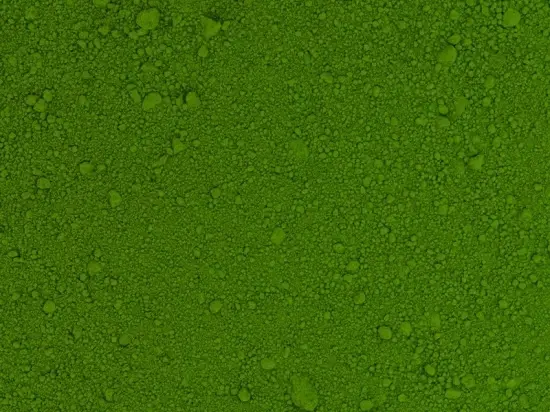
Chlorella sorokiniana
weeks

Typical applications: Chlorella sorokiniana
Typical applications
Biotechnological and Health Applications
Nutritional Supplements: Due to its high protein content and nutritional profile, Chlorella sorokiniana is widely used in dietary supplements and health products. It is often consumed in the form of tablets, powders, or extracts.
Aquaculture: This microalga serves as a feedstock in aquaculture for fish and shellfish, providing essential nutrients for growth and development.
Biofuels: Chlorella sorokiniana has been explored as a potential source of biofuels, particularly for its high lipid content, which can be converted into biodiesel.
Wastewater Treatment: It is used in wastewater treatment to remove heavy metals and other pollutants through processes like biosorption.
Health Benefits
Immune Support: Chlorella sorokiniana contains bioactive compounds that are believed to boost the immune system.
Antioxidant Properties: The presence of chlorophyll and carotenoids offers antioxidant benefits, which can help in reducing oxidative stress.
Detoxification: It is thought to aid in detoxifying the body by binding to heavy metals and toxins, facilitating their excretion.

ALGANEX certificate system
Product information: Chlorella sorokiniana
Chlorella sorokiniana is a species of green microalgae belonging to the genus Chlorella. It is widely studied and cultivated for its nutritional and biotechnological applications due to its rapid growth and ability to produce valuable bioactive compounds.
Key Characteristics
Appearance: Chlorella sorokiniana is a unicellular, spherical, green microalga that measures approximately 2-10 µm in diameter. It is characterized by its high chlorophyll content, which gives it a bright green color.
Growth Rate: This species has a high growth rate and is particularly known for its adaptability to different environmental conditions, including varying light intensities and temperatures.
Photosynthesis: Like other Chlorella species, it is a photoautotroph, meaning it relies on light to synthesize nutrients through photosynthesis.
Nutritional Value
Chlorella sorokiniana is rich in proteins, essential amino acids, vitamins (such as B12), and minerals. It also contains chlorophyll, carotenoids, and polyunsaturated fatty acids, which contribute to its health benefits.
Research and Studies
Chlorella sorokiniana has been extensively studied for its ability to adapt to various stress conditions, including high temperatures and varying CO2 concentrations. This makes it an ideal candidate for large-scale cultivation in outdoor systems.
What are the key nutritional benefits of Chlorella sorokiniana?
Chlorella sorokiniana is rich in proteins, essential amino acids, vitamins (such as B12), minerals, chlorophyll, carotenoids, and polyunsaturated fatty acids, making it a highly nutritious supplement.
How is Chlorella sorokiniana used in dietary supplements and health products?
Chlorella sorokiniana is commonly used in dietary supplements, offered in the form of tablets, powders, and extracts, due to its high protein content and health-promoting compounds.
What makes Chlorella sorokiniana a good candidate for biofuel production?
Chlorella sorokiniana has a high lipid content, which can be converted into biodiesel, making it a promising candidate for sustainable biofuel production.
Can Chlorella sorokiniana be used in wastewater treatment, and how does it work?
Yes, Chlorella sorokiniana can be used in wastewater treatment as it absorbs and removes heavy metals and pollutants from water through a process called biosorption.
What are the potential health benefits of consuming Chlorella sorokiniana?
Potential health benefits include immune support, antioxidant properties, detoxification, and the provision of essential nutrients that contribute to overall well-being.
How does Chlorella sorokiniana contribute to aquaculture feed?
Chlorella sorokiniana serves as a nutritious feedstock in aquaculture, providing essential nutrients and proteins needed for the growth and development of fish and shellfish.
What are the antioxidant properties of Chlorella sorokiniana and how do they benefit human health?
Chlorella sorokiniana contains antioxidants like chlorophyll and carotenoids, which help reduce oxidative stress, protect cells, and promote overall health.
How does Chlorella sorokiniana adapt to different environmental conditions for large-scale cultivation?
Chlorella sorokiniana is highly adaptable to various conditions, tolerating different temperatures, light intensities, and CO2 levels, making it suitable for large-scale cultivation.
What are the differences between Chlorella sorokiniana and other Chlorella species in terms of growth and applications?
Chlorella sorokiniana is known for its faster growth rate and higher adaptability compared to other Chlorella species, making it more suitable for large-scale production and versatile applications.
Is Chlorella sorokiniana safe for daily consumption, and are there any potential side effects?
Chlorella sorokiniana is generally safe for daily consumption; however, some people may experience mild digestive issues or allergies. It is recommended to start with a small dosage and consult a healthcare provider.
Sources
- Ishiguro S, Roth M, Welti R, Loyd M, Thakkar R, Phillips M, Robben N, Upreti D, Nakashima A, Suzuki K, Comer J, Tamura M. A Water Extract from Chlorella sorokiniana Cell Walls Stimulates Growth of Bone Marrow Cells and Splenocytes. Nutrients. 2022 Jul 15;14(14):2901. doi: 10.3390/nu14142901. PMID: 35889858; PMCID: PMC9322350. (https://pubmed.ncbi.nlm.nih.gov/35889858/)
- Kumar K, Dasgupta CN, Das D. Cell growth kinetics of Chlorella sorokiniana and nutritional values of its biomass. Bioresour Technol. 2014 Sep;167:358-66. doi: 10.1016/j.biortech.2014.05.118. Epub 2014 Jun 16. PMID: 24997380. (https://pubmed.ncbi.nlm.nih.gov/24997380/)
- Ballesteros-Torres JM, Samaniego-Moreno L, Gomez-Flores R, Tamez-Guerra RS, Rodríguez-Padilla C, Tamez-Guerra P. Amino acids and acylcarnitine production by Chlorella vulgaris and Chlorella sorokiniana microalgae from wastewater culture. PeerJ. 2019 Dec 3;7:e7977. doi: 10.7717/peerj.7977. PMID: 31824754; PMCID: PMC6896938. (https://pubmed.ncbi.nlm.nih.gov/31824754/)
- Morgese MG, Mhillaj E, Francavilla M, Bove M, Morgano L, Tucci P, Trabace L, Schiavone S. Chlorella sorokiniana Extract Improves Short-Term Memory in Rats. Molecules. 2016 Sep 29;21(10):1311. doi: 10.3390/molecules21101311. PMID: 27689989; PMCID: PMC6274193. (https://pubmed.ncbi.nlm.nih.gov/27689989/)
- Napolitano G, Fasciolo G, Salbitani G, Venditti P. Chlorella sorokiniana Dietary Supplementation Increases Antioxidant Capacities and Reduces Ros Release in Mitochondria of Hyperthyroid Rat Liver. Antioxidants (Basel). 2020 Sep 17;9(9):883. doi: 10.3390/antiox9090883. PMID: 32957734; PMCID: PMC7555375. (https://pubmed.ncbi.nlm.nih.gov/32957734/)
Reply within twelve hours